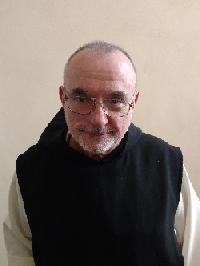Solemnity of St. Joseph
 We are largely dependent on the imagination of artists for the images of St. Joseph that we carry around in our heads. He is almost always depicted as an old man or lying on his death bed. He is in the background, with no speaking part and disappears at the end of act 1, scene 1. The classic icon of the Nativity has the shepherds coming to adore before Jesus and Mary, while Joseph is relegated to a remote corner where some dark figure (Satan?) approaches him and appears to be sowing doubts in his mind.
We are largely dependent on the imagination of artists for the images of St. Joseph that we carry around in our heads. He is almost always depicted as an old man or lying on his death bed. He is in the background, with no speaking part and disappears at the end of act 1, scene 1. The classic icon of the Nativity has the shepherds coming to adore before Jesus and Mary, while Joseph is relegated to a remote corner where some dark figure (Satan?) approaches him and appears to be sowing doubts in his mind.
To a great extent, Joseph is a mystery to us. What was he feeling and thinking? Joseph gets put in the background and shadows. We like those details and we like explanations. We claim we like full disclosure. What can’t be explained is not worth our attention. But if we are honest, we might have to admit that we are better at concealing than revealing. Full disclosure, sensitivity sessions evoke anxiety in our hearts. We are mysteries to ourselves. We patch together certain traits, preferences, habits that are available to our consciousness and memory, but we know that there is an ocean of reality lurking in our unconscious that is not readily accessible. Much more has “happened to us” than we have concocted. Teilhard has said that we undergo life just as we undergo death. What do we have that we have not received? The myriad of passivities, what has happened to us beyond our choosing or deliberation, are the mysterious fabric out of which we stitch together our personal stories. More than from assertions, we live from questions. We have questions for which we are not given answers. And we are questioned by life, asked to respond from levels deeper than the facile surface answers we use to avoid anxiety or doubt.
 St. Joseph has been named as Patron of the Universal Church and Patron of a Happy Death. (He could also be patron of realtors, for if you bury his statue upside down in your backyard you will quickly sell your house.) But I think he should also be named Patron of Those Who Have the Courage to Be Changed By the Questions and Mysteries of Life. They may be believers and they may be righteous before God. But they know that even more is being asked, that they are being asked to respond with and to the mystery of God that seeks to emerge through the limits of their life. The only reason and source of this faith is faith itself.
St. Joseph has been named as Patron of the Universal Church and Patron of a Happy Death. (He could also be patron of realtors, for if you bury his statue upside down in your backyard you will quickly sell your house.) But I think he should also be named Patron of Those Who Have the Courage to Be Changed By the Questions and Mysteries of Life. They may be believers and they may be righteous before God. But they know that even more is being asked, that they are being asked to respond with and to the mystery of God that seeks to emerge through the limits of their life. The only reason and source of this faith is faith itself.
Their righteousness is a righteousness that comes from and with and in the gift of faith. They are brought to the margins and the limits, with fear and trembling and anxiety, to discover that the margins and limits border on the infinite, the unspeakable, the invisible. We need to hear the words Do not be afraid. Living at the margins, in the shadows, can open our lives to what God wants to do in our lives. We come to our own limits and come face to face with God, the God who brings the dead to life and calls into being what does not exist. Do not be afraid to take this mystery into your home, into your life. St. Joseph was a man of a faith which manifested itself in courage, obedience, and initiative. He walked the path of solitude and silence and met God on that path.
